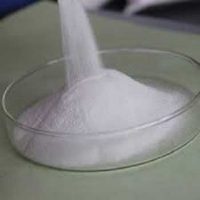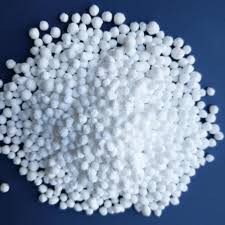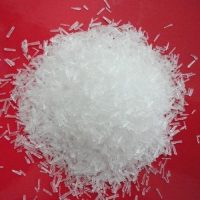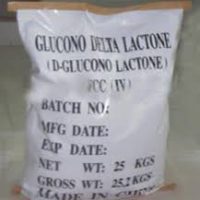Sodium metabisulfite
Sodium metabisulfite has found use as a reducing agent in the manufacture of biscuits, especially the low-fat, low-sugar types embraced by the generic term ‘semi-sweet’.
CAS number: 7681-57-4
E number: E223
- Description
- Product Specification
Description
Sodium metabisulfite is an inorganic compound with the chemical formula Na2S2O5, sometimes called disodium metabisulfite. This compound is used as a disinfectant, antioxidant, and food preservative. If the chamber in which the solution is placed is not insulated, it will combine with the humidity and then oxidize.

Physical and Chemical Properties:
This compound is composed of the elements nitrogen, sulfur, and oxygen. Sodium metabisulfite is a white powder that, when combined with water, absorbs oxygen in the water and releases sulfur dioxide (SO2) gas, which also produces an unpleasant odor. The unpleasant odor produced by this compound destroys the environment, animals, and plants. The release of sulfur dioxide also converts sodium metabisulfite into a water-reducing agent, so it should not be dumped in rivers and lakes.
| Chemical formula | Na2S2O5 |
| Molecular Weight (g/mol) | 190.107 |
| Appearance | solid |
| odor | a slight odor of sulfur |
| PH (10 % aqueous solution) | 4.0-5.5 |
| Density (g/cm3) | 1.48 |
| Melting point (° C) | 170 (338 °F; 443 K) |
| Boiling point (° C) | decomposes |
| Water Solubility | Freely soluble in water |
| Solubility | Very soluble in glycerol, ethanol |
| color | crystals or crystalline powder |
| form | White to yellowish |
|
Chemical Structure Depiction |
 |
The Production Process of Sodium Metabisulfite:
Various methods have been proposed for the production of sodium metabisulfite. This compound can be produced by evaporating a solution of sodium sulfite saturated with sulfur dioxide gas.
Sodium metabisulfite in combination with acids releases sulfur dioxide:
Na2S2O5 + 2 HCl → 2 NaCl + H2O + 2SO2
At high temperatures this compound releases sulfur dioxide which remains sodium sulfite:
Na2S2O5 → Na2SO3 + SO2
The newest method of producing sodium metabisulfite in the world is the use of the wet gas process. In this process, due to the direct contact of the gas with the substrate and under special conditions, in this method, the highest efficiency in terms of quantity and quality is achieved.
Applications and Uses of Sodium Metabisulfite:
This compound is also used as a preservative for cooked products, wine, dried fruits, and jams due to its antioxidant properties.
This compound is also used in wastewater treatment because it can reduce the hexavalent chromium used in this industry to its trivalent form.
Sodium metabisulfite is one of the raw materials used in Campden tablets.
The compound is also used to test sickle cell disease, which is a type of anemia
Because sodium metabisulfite can act as an oxygen scavenger, it is used as a corrosion inhibitor in the oil industry.
It is used as a bleach or reducing agent in the pulp and paper industry, photography, and other industries.
Use as a Preservative:
sodium metabisulfite is mainly used as a preservative to prevent the growth of bacteria in food and increase shelf life, prevent browning and loss of freshness in fruits, vegetables, and other foods. Its recommended daily intake is about 0.7 grams per kilogram of human weight. However, if you are allergic to sulfite compounds, this amount should be less. Foods that contain the most sulfite compounds include sauces, processed products such as sausages, some seafood such as oysters, and soy-containing compounds.

Sodium Metabisulfite in Water Treatment:
Sodium metabisulfite acts as a chlorinator and is used in water treatment plants to remove excess chlorine and return excess chlorine to the sea or river.
This compound is also used to dechlorinate water before the water enters the reverse osmosis system and is also used as a strong reducing agent, especially for chromium reduction in water and wastewater treatment.
Safety Information:
SMBS dust inhalation has been reported to exacerbate asthma or other lung diseases and may cause headaches, difficulty breathing, or irregular heartbeat.
Swallowing this substance may also cause gastrointestinal irritation, nausea, vomiting, and diarrhea.
Contact with skin may cause minor irritation, itching, redness, and swelling.
Contact of this chemical with the eyes causes redness, tears, and irritation of the eyes.
In case of contact with this substance, change clothes immediately, wash the area with plenty of water and go to medical centers.
Packing and Storage:
Store in a tightly closed, original container in a dry, cool, and well-ventilated place. Keep away from acids. Avoid contact with oxidizing agents.
Sodium metabisulfite
CAS number: 7681-57-4
E number: E223
Product Specification :












